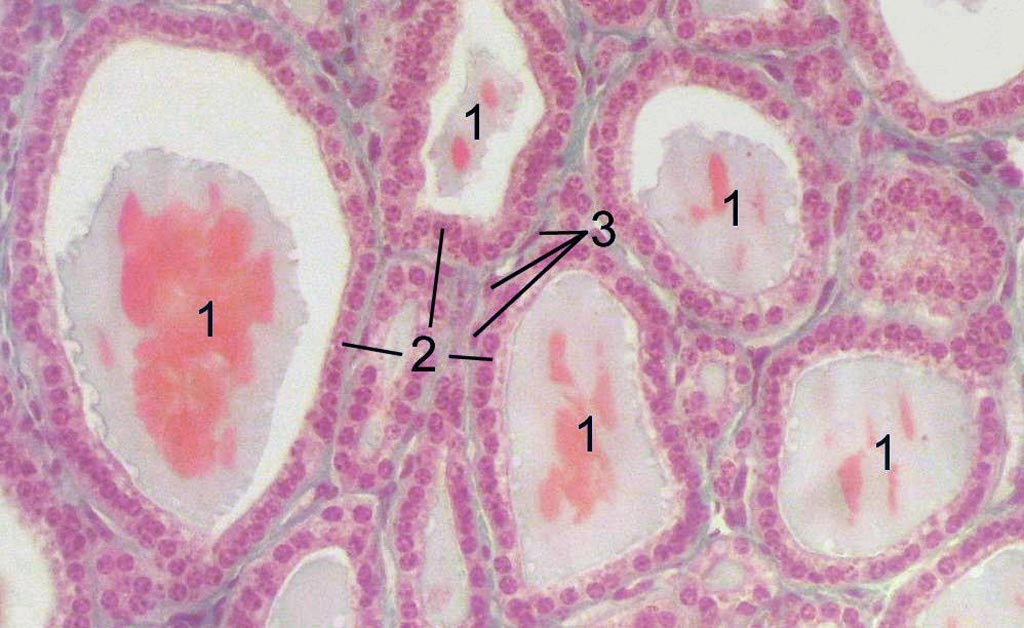Novel Method Enables Generation of Thyroid Tissue from Mouse Stem Cells
By LabMedica International staff writers
Posted on 24 Feb 2017
A novel method for generating thyroid cells (thyrocytes) from embryonic stem cells was demonstrated in a mouse model.Posted on 24 Feb 2017
The dysfunctional thyroid gland can lead to severe disease such as Grave's disease or Hashimoto's disease, which can result in hyper or hypothyroidism, thyroid nodules, goiter, or cancer. The development of a method to generate thyrocytes from stem cells is of importance for studying the thyroid gland and possibly as a mechanism to repair it.

Image: A photomicrograph of a thyroid gland section: (1) follicles, (2) follicular cells, (3) endothelial cells (Photo courtesy of Wikimedia Commons).
Investigators at Boston University Medical Center worked with genetically modified mouse embryonic stem cell to search for a new efficient way to generate thyrocytes. Towards this end, they engineered mouse embryonic stem cells to express a genetic switch for the NKX2-1 (NK2 homeobox 1) gene. Then, they coached the embryonic stem cells through various stages while switching NKX2-1 on and off for short periods of time.
Describing the study in the February 2, 2017, online edition of the journal Stem Cell Reports, the investigators reported that they had identified the transient overexpression of the transcription factor NKX2-1 as a powerful inductive signal for the robust derivation of thyrocyte-like cells from mouse pluripotent stem cell-derived anterior foregut endoderm (AFE). This thyroid conversion effect pertained only to a narrow developmental window of competence contingent on several parameters, including dual bone morphogenetic protein (BMP)/fibroblast growth factor (FGF) signaling and correct anterior patterning of definitive endoderm (DE). Mature cultures produced T4 hormone at levels comparable with mouse thyroid tissue.
"This method resulted in high yield of our target cell type, thyroid cells, but it may be applicable for the derivation of other clinically relevant cell types such as lung cells, insulin-producing cells, liver cells, etc.," said senior author Dr. Laertis Ikonomou, assistant professor of medicine at the Boston University Medical Center.














